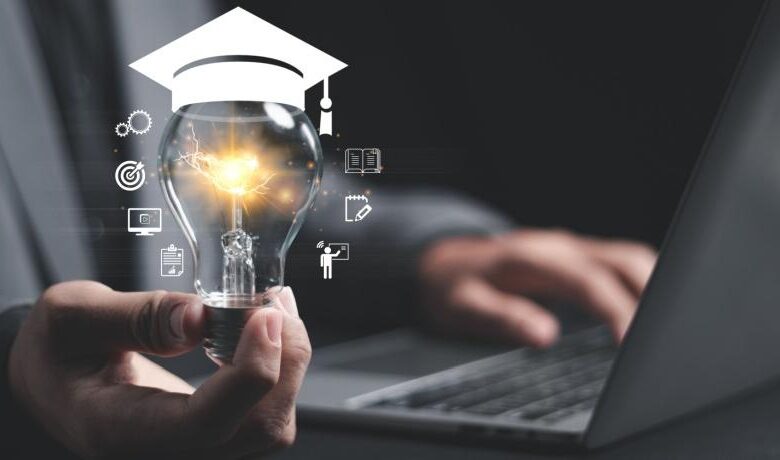The Power Of eLearning: Effective Strategies


Proven Techniques For Maximizing eLearning
The world of education has been revolutionized by the advent of eLearning. With technological advancements, students and educators are increasingly turning to digital platforms for learning and teaching. This shift is not just a response to global challenges but a transformation that enhances the accessibility and flexibility of education. However, maximizing the power of eLearning requires strategic approaches tailored to the needs of students and educators.
Top Tips To Help You Effectively Leverage The Power Of eLearning
1. Embrace Interactive Learning Tools
Animation and other interactive elements are the staple of eLearning. It is noteworthy that elements such as real-time quizzes, interactive discussions, virtual labs, etc., have a very positive impact on learning. These tools, in addition to making learning more interesting, make the students feel as if they are active participants in the learning process. It is advisable for educators to adopt diverse forms of interactivity in their courses so as to meet the needs of different learning preferences.
2. Develop A Structured Learning Environment
Another typical issue that should be considered when harnessing the power of eLearning is relevancy of context, or, more specifically, the lack, of a more formal setting. Both students and educators should ensure that they set a general order of the day that resembles the face-to-face teaching and learning environment. To apply this concept of time for students, they must have their calendars showing the specific period of study, virtual classes, and when to write their assignments. For educators, it entails mapping out the lessons very closely and being able to track progress by use of calendars or other artifacts on project scheduling. When learners stick to their learning schedules they are disciplined and education objectives are achieved.
3. Utilize Multimedia Resources
Incorporation of multimedia resources can be very helpful in getting and retaining information. There are other forms of presenting content that might be more useful than flat texts, including videos, animations, infographics, and podcasts. Teachers should always have several forms of multimedia documents so as to help students who are auditory, visual, or kinesthetic learners.
4. Encourage Collaboration And Peer Interaction
Another disadvantage of eLearning that most students agree with is that one does not get to meet the teacher. In response to this, there are measures that educators can take to ensure that the sense of community is fostered. The teachers may ensure that the assignments are group-based to ensure that the students engage with each other in solving them, and that they are allowed to exchange ideas through online forums and engage in peer reviewing. Such interactions create the spirit of togetherness, enhancing problem-solving skills among students. Virtual classrooms should be similar to traditional classrooms in that they should also encourage communication amongst the fellow-students and teachers.
5. Prioritize Feedback And Assessment
Feedback is also important in the eLearning environment. Feedback that is provided as soon as possible and is constructive is considered to be the best kind. Teachers are encouraged to give feedback that will enable students to progress, check on their progress, and guide students to focus on the areas that are best for them. There are many tools that enable teachers to create quizzes, assign them, and offer feedback at the click of a button; these can be adopted to ease this process. Self-organization and action mapping are important methods to help students in monitoring their progress as it helps them to define the results achieved and their further learning needs.
6. Incorporate Self-Paced Learning Options
Versatility and flexibility are the benefits of modern eLearning benefits. Making students study at their own pace can prove helpful since they retain the information better this way. Teachers ought to develop programs that afford choices allowing self-performed learning mechanisms to enable progression at a quick rate. This approach is particularly friendly to learners as they are allowed to progress at different speeds whereby the stress and anxiety associated with tight schedules are discouraged.
7. Addressing Digital Literacy
A proper eLearning platform has to meet one more requirement: the student and the teacher have to be somewhat digitally literate. User training academies, through which users get taken through the tools and applications they are to use, may be required. These programs should tackle issues such as how to utilize the User Interface of the eLearning platforms, how to communicate on the platforms, and the basic manners of technology. Having the people feel comfortable with the technology is a basic prerequisite of eLearning which needs to be fulfilled.
Conclusion
The integration of eLearning into mainstream education is more than just a trend; it is a significant shift toward a more flexible, inclusive, and personalized learning experience. By embracing interactive tools, maintaining structured routines, using multimedia resources, encouraging collaboration, prioritizing feedback, offering self-paced options, and ensuring digital literacy, students and educators can maximize the benefits of eLearning. As the field continues to evolve, staying informed and adaptable will be key to harnessing the full power of eLearning.
Source link



